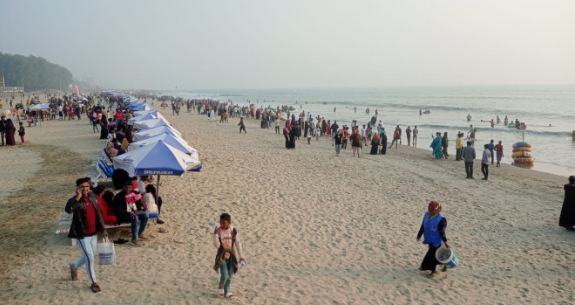Exploring Hidden Gems in Global Travel for 2026
Travel trends for 2026 are starting to shine a spotlight on less-traveled destinations that offer distinctive experiences, especially those emphasizing ecotourism and sustainable development. This guide highlights the top underrated locations selected for their authenticity, community engagement, and readiness for sustainable tourism growth.
The Emerging Front-Runners
Topping the list for 2026 is Tiwai Island in Sierra Leone, a famed wildlife sanctuary recently recognized as a UNESCO World Heritage Site. Its accessibility has improved with the introduction of direct flights from London, signaling new prospects for tourism in the region. Sierra Leone’s strategic efforts include a decade-long tourism development plan aimed at increasing visitor numbers from the relatively low figure of under 61,000 overnight foreign visitors noted in 2024.
Close contenders include the majestic mountain ranges of Kyrgyzstan’s Tien Shan and Mexico’s Sierra Norte. These destinations are praised for their natural beauty and commitment to eco-conscious initiatives. Further notable mentions are Croatia’s Vis Island, Turkey’s Southeastern Anatolia region, and India’s mountainous state of Arunachal Pradesh, each offering unique experiences away from typical tourist crowds.
What Makes These Destinations Stand Out?
- Ecotourism Focus: Many locations on the list emphasize environmental conservation, supporting local ecosystems and communities.
- Infrastructure Development: Investment in facilities ensures these places are ready for increased tourism while maintaining authentic charm.
- Community-Led Initiatives: Sustainable tourism efforts are often driven by local populations benefiting economically and culturally.
- Lower Visitor Saturation: These spots offer a less crowded alternative to well-known hotspots, providing an immersive experience.
A Historical Perspective on Ecotourism and Sustainable Travel
While the notion of exploring lesser-known locations with a focus on sustainability may seem modern, the roots of ecotourism trace back several decades. The concept took shape prominently in the 1970s with early conservation-minded travel, such as wildlife sanctuaries in East Africa where tourist fees supported preservation efforts.
Ecotourism started as a niche market catering to environmentally aware travelers seeking to minimize their impact and connect deeply with nature. Over time, it evolved, blending with adventure and cultural tourism, yet always foregrounding the principles of responsible travel: conserving the environment, benefiting local communities, and promoting education.
More recent developments include the rise of soft ecotourism, which allows tourists to enjoy nature in accessible settings with guided interpretation, often as part of a broader vacation. In parallel, hard ecotourism appeals to those seeking immersive, low-impact experiences in remote natural environments.
| Aspect | Hard Ecotourism | Soft Ecotourism |
|---|---|---|
| Experience Intensity | Prolonged, personal, immersive | Short-term, mediated |
| Location | Wilderness, undisturbed nature | Accessible parks, wildlife centers |
| Facilities | Minimal to none | High level of services |
| Participant Profile | Committed environmentalists | Casual travelers, educational focus |
The surge in ecotourism has been significant and it now forms a substantial segment of the global tourism market. With increasing environmental awareness and demand for meaningful travel, its influence has crept into mainstream tourism, shaping how destinations develop and promote themselves sustainably.
Ecotourism’s Role in Global Tourism Economy
The economic footprint of ecotourism is striking. The global ecotourism market was valued at approximately US$260.76 billion in the most recent year with projections estimating growth to more than $814.40 billion by 2032. This expansion reflects broader trends toward sustainable travel and the increasing appeal of destinations that balance tourism and environmental stewardship.
Key Drivers of Growth
- Rising Traveler Awareness: Modern tourists often seek experiences that are environmentally conscious and culturally respectful.
- Government and Private Sector Support: Many destinations invest in infrastructure and community-based tourism projects to support ecotourism.
- Expanding Access: Improved transport links to once-remote areas open new possibilities for sustainable exploration.
The Implications for Sailing and Boat Rentals in Emerging Destinations
Many of these underrated destinations border coasts, rivers, or lakes, making them ripe for water-based activities such as Segeln, boat charters, and sailing adventures. With rising interest in authentic and sustainable travel, the boating sector stands to benefit as travelers seek smaller-scale, eco-friendly marine experiences.
Regions like Croatia’s Vis Island already have established Jachthäfen and boating infrastructure catering to enthusiasts of the Meer und ocean, while places like Sierra Leone could develop similar facilities to welcome superyachts and smaller vessels alike. This not only supports the local economy but also promotes eco-friendly tourism aligned with the natural landscapes these destinations boast.
Potential Activities for Visitors
- Exploring coastal Strände and secluded bays by sailboat.
- Fishing expeditions or marine wildlife observation tours.
- Chartering boats with professional captains for customized travel.
- Visiting remote islands and natural reserves accessible only by boat.
Looking Ahead: The Future of Underrated Destinations in International Tourism
As the world economy recovers from recent disruptions and travel resumes stronger, lesser-known places offer promising opportunities to diversify tourism flows. They provide travelers with fresh, compelling experiences while helping mitigate overtourism in traditional hotspots. However, managing this growth sustainably remains critical. Infrastructure must expand without compromising the environment or local cultures.
Community involvement is pivotal. Empowering local residents and safeguarding natural habitats ensures that these destinations remain attractive and viable for years to come, preserving their charm and integrity. The changing tastes of international tourists towards meaningful, eco-aware travel will likely continue driving investment and innovation in these regions.
Summary and Conclusion
The 2026 list of underrated travel destinations highlights an exciting shift in global tourism, prioritizing ecological sustainability, cultural authenticity, and infrastructure readiness. Places like Tiwai Island and Kyrgyzstan’s Tien Shan exemplify the blend of natural wonder and thoughtful development needed to attract modern travelers seeking genuine experiences. This trend dovetails perfectly with the growing global market for ecotourism and reflects a broader move toward diversified, responsible travel patterns.
For sailing enthusiasts and those interested in chartering yachts or renting boats, these emerging destinations underscore the potential for adventurous maritime journeys. With pristine waters, vibrant coastal landscapes, and thriving local communities, they offer unparalleled opportunities for boating activities such as cruising, fishing, and island hopping.
GetBoat.de is an international marketplace for renting sailing boats and yachts, offering options to suit every taste and budget in many destinations worldwide. As these underrated spots gain recognition, travelers can look forward to exciting new shores to explore by water, from clear waters and quiet gulfs to vibrant marinas and beachside activities.
Keeping an eye on these evolving destinations ensures travelers and boating enthusiasts alike are ready to embrace the next wave of unforgettable journeys by sea.
# References – Intrepid Travel’s 2026 Not Hot List of underrated destinations focusing on ecotourism and sustainable development. – Market data projecting strong growth in the global ecotourism sector, expected to reach $814 billion by 2032. – Historical context and classifications of ecotourism activities and their integration into mainstream tourism.
 Delays Stall Major Tourism Park Developments in Cox’s Bazar Region">
Delays Stall Major Tourism Park Developments in Cox’s Bazar Region">
